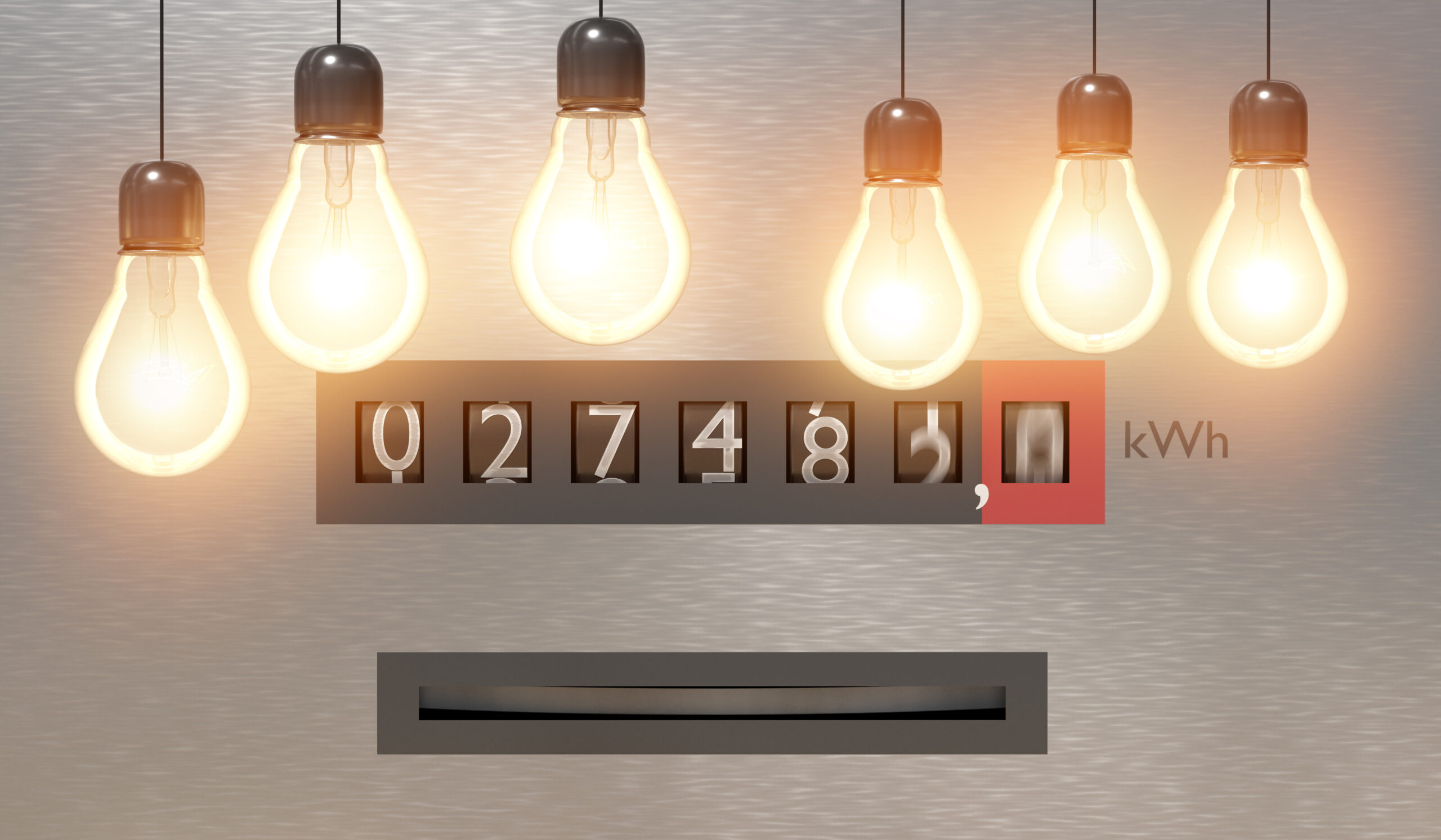If you’ve ever found yourself scratching your head over your energy bill, don’t worry, you’re not alone! Understanding your bill is the first step in making sure you’re getting the best deal on your power. In New South Wales, South-East Queensland and South Australia, the retail price of electricity is based on the Default Market Offer (DMO). Read on for a comprehensive guide about what the DMO is, why it was created and how it impacts your electricity prices.
This guide will cover:
- What is the Default Market Offer?
- Why was the DMO introduced?
- Who controls the DMO rates?
- How much are the DMO tariffs?
- How does the DMO help me?
- Is the DMO the best plan for me?
- What about my solar?
- Are there DMO tariffs for off-peak electricity usage?
- How do I find a cheaper electricity plan?
If you live in Victoria, your rates are based on the Victorian Default Offer (VDO). You can read our guide to the VDO here.
What is the Default Market Offer?
The Default Market Offer (DMO) is an electricity price set on behalf of the Federal government, rather than by the electricity retailers. The DMO is part of the government’s broader set of national energy legislation and rules that are designed to protect households and small businesses from price gouging and unaffordable energy prices. There are two key purposes the DMO fulfils:
- Capping electricity prices – the DMO is a government initiative that protects customers from expensive, unfairly inflated prices. The DMO price is the maximum price retailers can charge for electricity. This means customers who are not actively engaged in the energy market are no longer at risk of being exploited by ever-increasing rates.
- Reference prices for discounts – the DMO is the reference price, or base rate, that energy retailers must use to calculate their discounts and advertise their plans. This means retailers cannot mislead customers with ‘fake’ discounts and consumers can trust and easily compare offers from retailers.
Why was the DMO introduced?
The DMO was introduced in response to the ACCC’s 2018 finding that the retail electricity market was too complicated and too difficult for consumers to navigate. This made it difficult for customers to find a good deal.
The report also found that electricity retailers were unfairly exploiting their loyal customers with non-discounted standing offers that were significantly more expensive than other plans. Retailers were supposed to tell customers when their market offer expired. However, the ACCC found that many consumers were left on standing offers, unknowingly paying hundreds of dollars more than they should.
The introduction of the DMO addressed these two key issues. Firstly, by capping the amount retailers can charge for their standing offers and automatically switching all customers on standing offers to the cheaper DMO rates. Secondly, the new rules require retailers to show their discounts as a percentage of the DMO reference price, enabling consumers to easily compare multiple deals.
Who controls the DMO rates?
The Australian Energy Regulator (AER) sets the price of the DMO every year. The AER is a regulatory body that oversees the wholesale energy market, energy networks and the retail energy market. This includes the National Energy Retail Framework, which provides a single framework to regulate Australia’s energy retail market. The National Energy Retail Framework includes the National Energy Retail Law, National Energy Retail Rules and National Energy Retail Regulations. These rules both protect customers and define obligations for energy retailers.
The AER determines the DMO price by looking at “the efficient cost of operating in the region, including a reasonable margin, as well as customer acquisition and retention costs.” (source: AER)
How much are the DMO rates?
The AER adjusts the DMO price yearly, taking into account retail trends and wholesale costs of electricity. The DMO price is set to reflect a fair price in the current market.
The DMO rate applicable to you depends on the network distribution zone you live in. This is to reflect the different costs of supplying power to different areas.
The 2021-2022 DMO annual prices can be seen on the Australian Energy Regulator website, and are summarised below.
| State | Network Distributor | DMO (residential customers without controlled load) | DMO (small business customers without controlled load) |
| NSW | Ausgrid | $1,393 (3900 kWh) | $6,900 (20,000 kWh) |
| NSW | Endeavour | $1,609 (4900 kWh) | $5,736 (20,000 kWh) |
| NSW | Essential | $1,907 (4600 kWh) | $7,791 (20,000 kWh) |
| SE QLD | Energex | $1,455 (4600 kWh) | $5,517 (20,000 kWh) |
| SA | SAPN | $1,716 (4000 kWh) | $8,033 (20,000 kWh) |
How does the DMO help me?
The DMO guarantees fair energy prices for everyone. When the DMO was introduced, customers on expensive ‘standing offers’ were automatically transferred to the DMO, resulting in significant savings.
If you haven’t reviewed your electricity plan for several years, then you were probably on a standing offer. You might have noticed a decrease in your bill when the DMO was implemented in July 2019. For customers in New South Wales, the DMO is estimated to save over $100 a year compared to a standing offer. In South-East Queensland and South Australia, the savings are even more.
The DMO also helps customers compare deals from different retailers by acting as a ‘reference price’. Retailers must now show their deals as a percentage of the reference price, making it easier for you to compare deals. This also prevents retailers from artificially inflating prices to offer misleading discounts.
Note: If you live in an apartment, or rent a space in a shopping centre, your electricity may be part of an embedded network. At this point in time, embedded networks are not covered by the DMO. However, Victoria has recently expanded the Victorian Default Offer to cover embedded networks, so the DMO may follow this example in the future.
Is the DMO the best plan for me?
The DMO is designed to be a fair price based on the efficient supply of electricity, but it is not the cheap electricity offer on the market. If you were on an expensive standing order, you might have noticed a decrease in your electricity bill when the DMO was introduced, but there are still more savings to be made! You just need the time to research the market and find a plan that is right for you.
Electricity companies in New South Wales, South Australia and South-East Queensland have a range of market offers. These plans include special offers and discounts which are usually cheaper than the DMO.
The market offer that is best for you depends on a number of factors, and might not just be the lowest rate. For example, there are offers available for solar customers, swimming pools, electric vehicles and off-peak energy use.
Retailers also offer limited-time discounts for new customers, such as a lower rate for the first 12 months of your contract. It is important to review your electricity plan regularly to make sure you are taking advantage of these offers and getting the best deal available.
It can be time-consuming to compare plans from the many retailers on the market. If you need help, a comparison tool like CheapBills can do all the hard work for you in one quick phone call.
What about my solar?
The DMO does not provide rates for solar feed-in tariffs. If you have solar panels on your home, it’s important to regularly compare providers. Retailers offer varying tariffs for the energy you provide back to the grid, so you want to make sure you’re getting the best deal.
The rate you pay for the electricity you use from the grid will depend on whether you are on the DMO or a market offer. Contact CheapBills to help you compare the leading solar energy plans in Australia.
Are there DMO tariffs for off-peak electricity usage?
Yes, the DMO has rates for off-peak electricity, called controlled load tariffs. Customers with a smart metre can take advantage of these lower rates by using electricity in the evenings or weekends.
The 2021-2022 DMO residential controlled load annual prices can be seen on the Australian Energy Regulator website and are summarised below.
| State | Network Distributor | DMO (residential customers, general usage plus controlled load |
| NSW | Ausgrid | $1,912 (General usage 4,800 kWh + CL 2,000 kWh) |
| NSW | Endeavour | $2,014 (General usage 5,200 kWh + CL 2,200 kWh) |
| NSW | Essential | $2,271 (General usage 4,600 kWh + CL 2,000 kWh) |
| SE QLD | Energex | $1,741 (General usage 4,400 kWh + CL 1,900 kWh) |
| SA | SAPN | $2,077 (General usage 4,200 kWh + CL 1,800 kWh |
How do I find a cheaper electricity plan?
Finding the best energy plan can be a time-consuming process. To start off, it’s important that you understand what you’re currently paying and what you need from your new plan. If you’re not sure what plan you are currently on, take a look at your electricity bill. Your bill will detail if you are on a market offer or the DMO. It should also tell you if you’re on the best available offer, so be sure to check the fine print!
If you’re currently on a market offer, avoid a future bill shock by noting when it expires and comparing your plan before your discount runs out. If you’re not sure about the terms of your contract you can contact your energy retailer for more information. They can tell you if you are on the DMO, or talk you through the details of your market offer.
The below table is a snapshot of the savings you can expect from some of Australia’s leading energy retailers in comparison to the DMO:
| Retailer and plan | Plan | Discount on reference price | Estimated saving per year* |
| EnergyAustralia | Total Plan (NSW) | 20% | $279 |
| Origin | Flexi Rate ePlus (QLD) | 19% | $277 |
| EnergyAustralia | Total Plan (SA) | 6% | $103 |
| Origin | Flexi Rate ePlus (SA) | 15% | $257 |
*Estimated savings based on the retailer’s estimated annual usage in kWh.
When comparing electricity plans, retailers will use the DMO as a benchmark, or reference price, so that you can easily compare plans from multiple providers. You will see each offer described as a percentage of the reference price, like in the table above. This has solved the previous problem consumers faced when they didn’t have transparency on discounts and had no choice but to trust the retailers’ discount claims.
You should also consider if you are eligible for the government’s energy concessions and benefits. These relief benefits are on top of the discounted rates and market offers offered by the retailers. If you are eligible for government energy benefits, you will receive the concession regardless if you have opted into the DMO or a market offer.
Finding the best electricity plan can be very time consuming, but it can save you hundreds of dollars a year on your bill. Using a comparison tool like CheapBills will make the process much quicker. Our team will find the best energy retailer to suit your unique needs and help you make the switch, all in one easy phone call!
Quick Links
If you want to learn more about the DMO or take action to find yourself a better electricity plan, use the links below.
- To read more about the DMO visit the Australian Energy Regulator website.
- To find out if there’s a better energy plan for you contact CheapBills.
For customers who live in Victoria, read about the Victorian Default Offer here.








